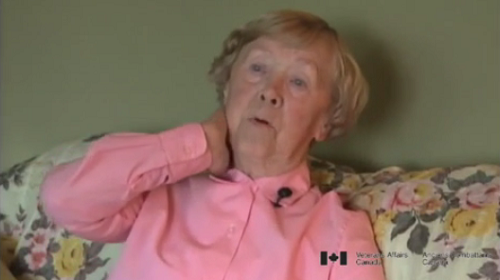Search
Search
Search Results
139 results returned
Canadian and English hospital service
After her husband had been mortally wounded at Ortona, and following his death Ms. Smith-Adamson enlists in the Royal Canadian Army Medical Corps as an operating room nurse. She serves in military hospitals in Toronto and Camp Borden, and later in a convalescent hospital in England. Her request for a transfer to the continent is granted.

Treating Field Marshall Montgomery
Ms. Smith-Adamson describes being the only nurse at her hospital denied an opportunity to see Field Marshall Montgomery during his visit to Germany. Ironically, his aircraft crashes and he arrives at her hospital for x-rays and a checkup. She is his nurse while he is there.
- Date modified:









